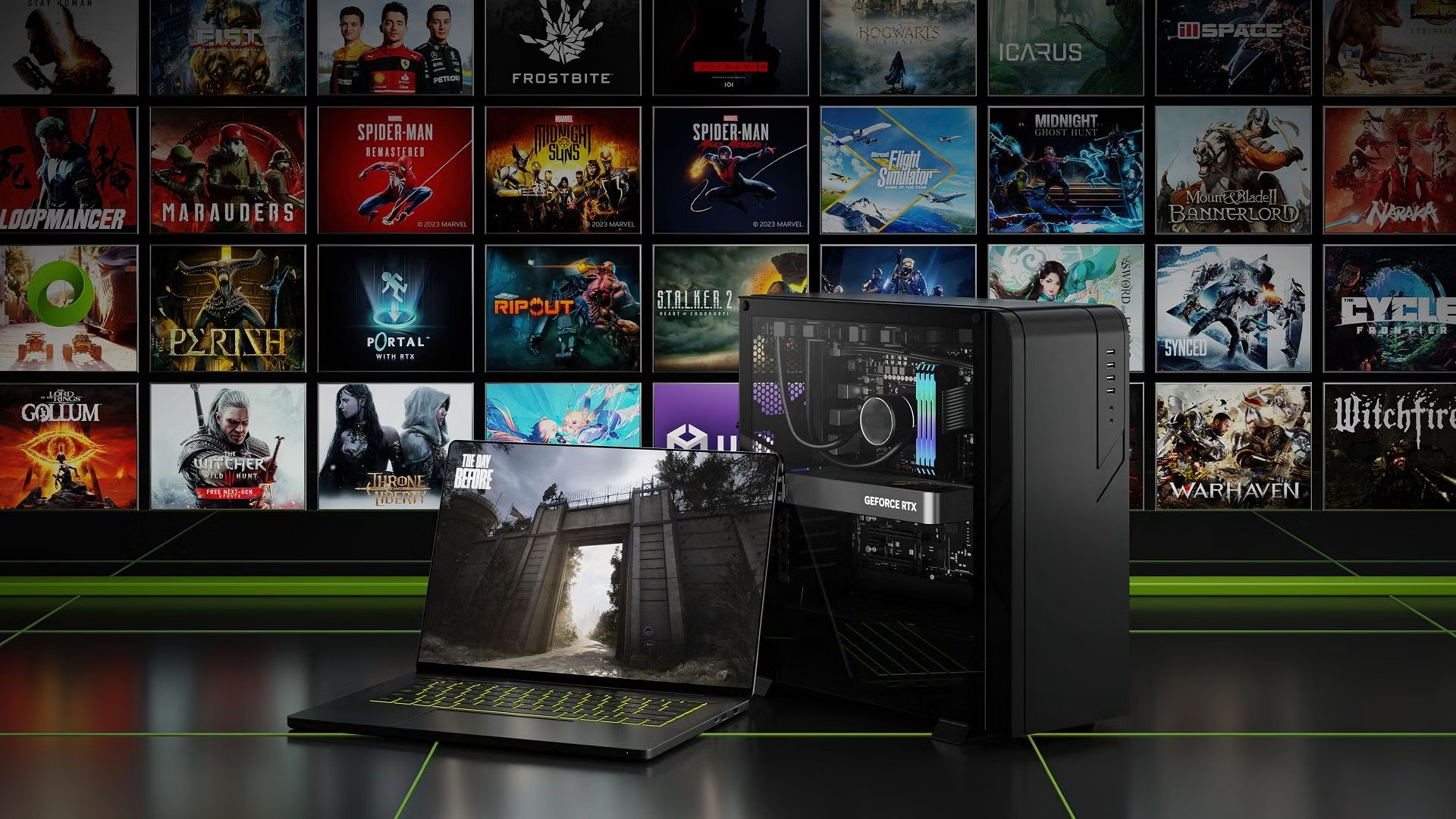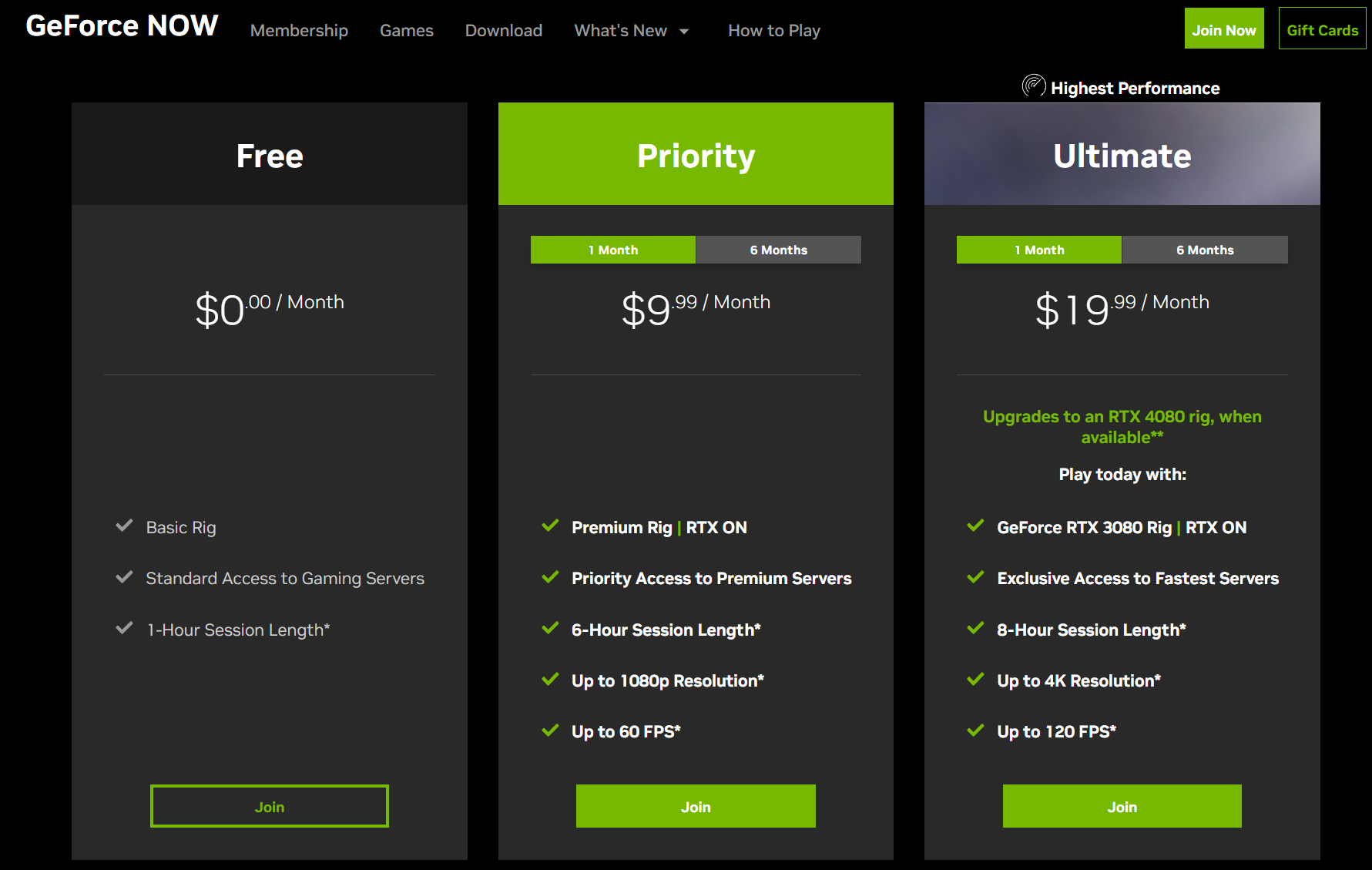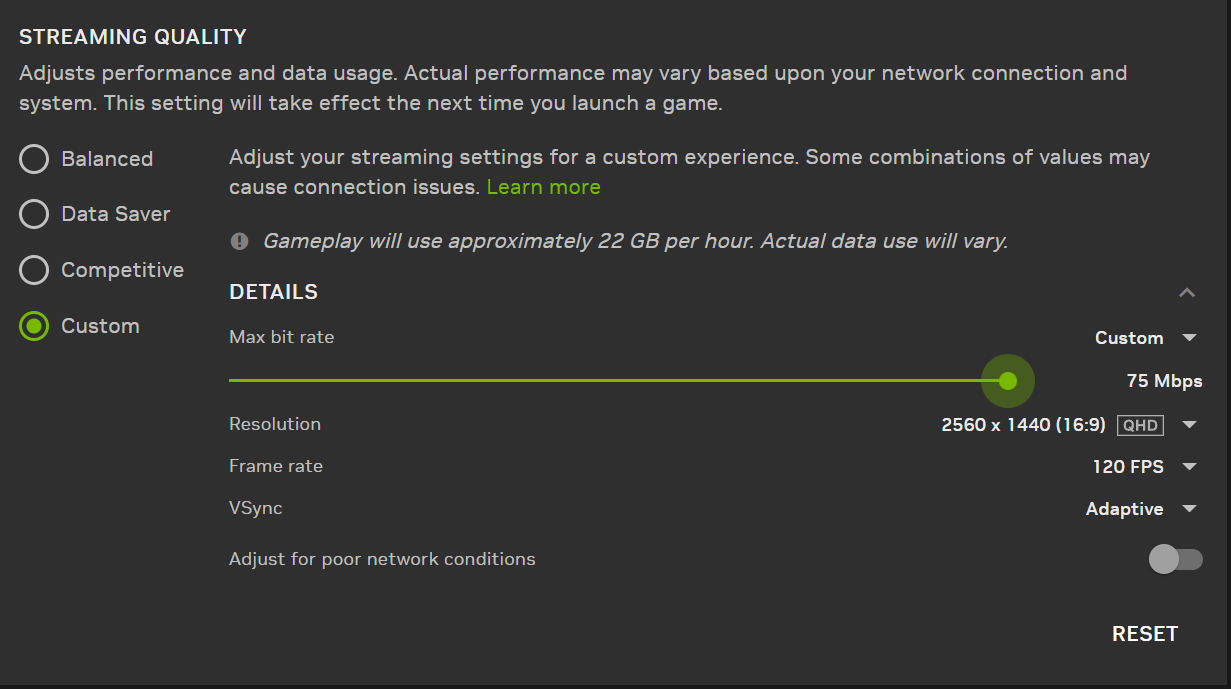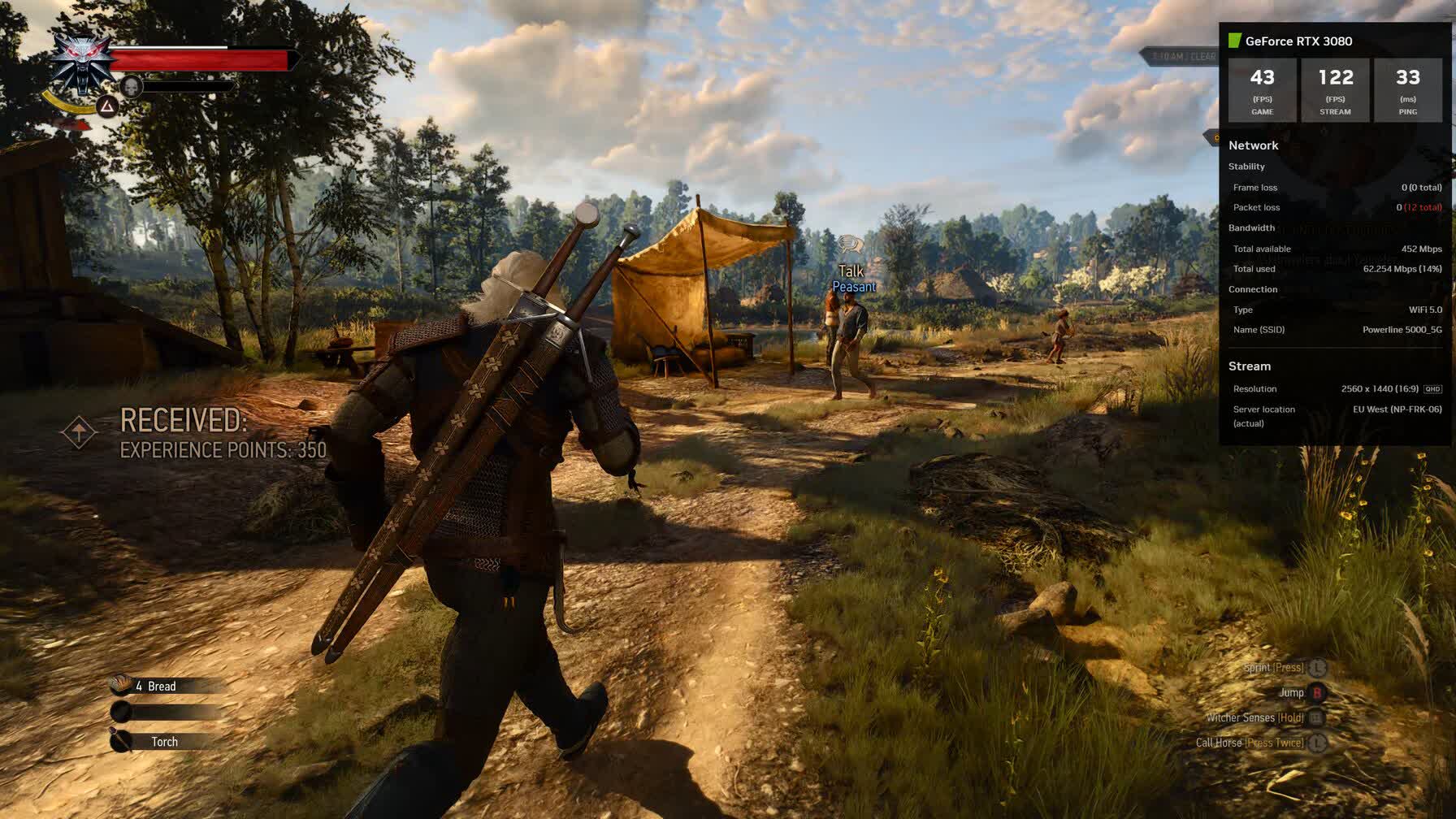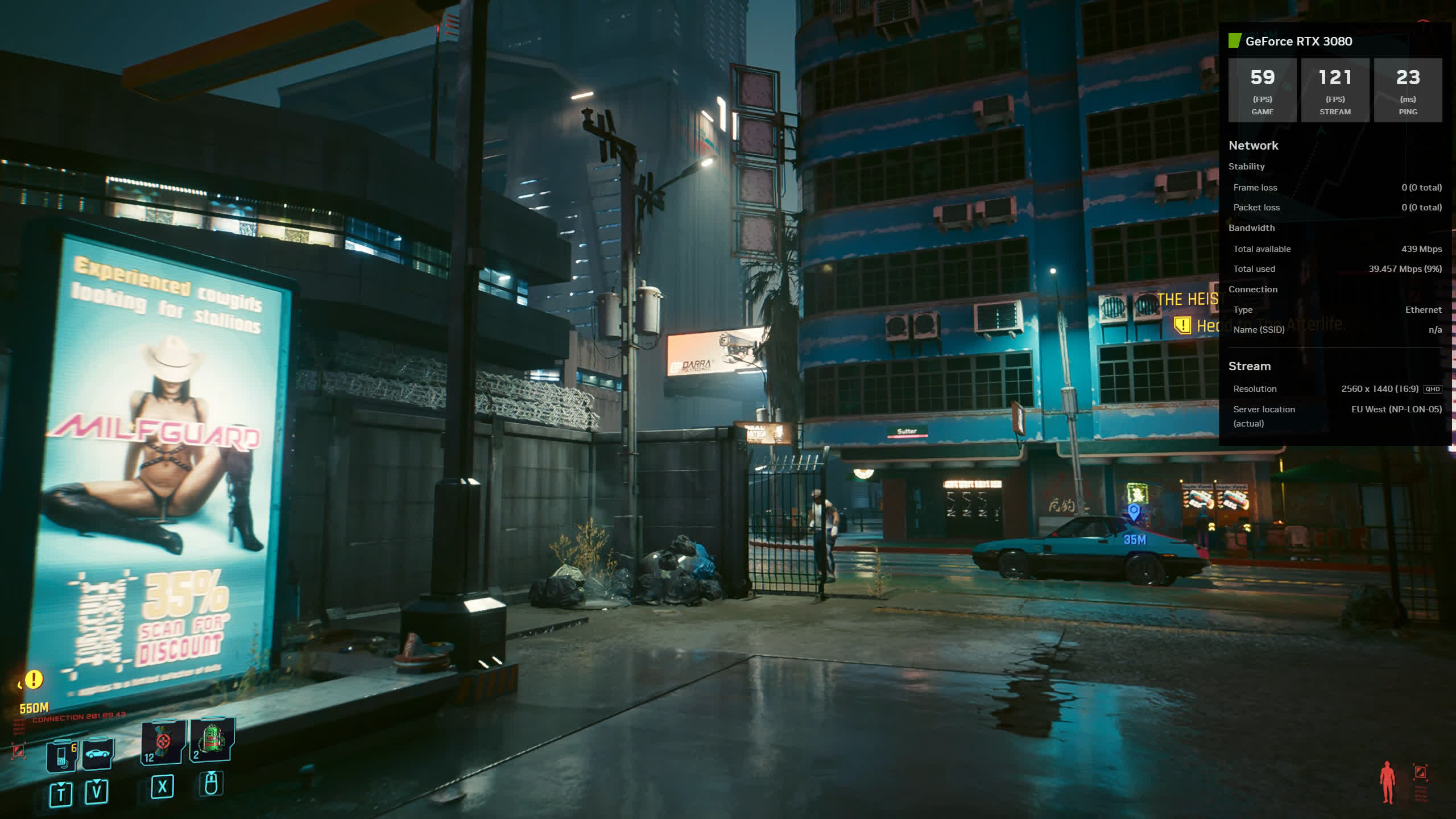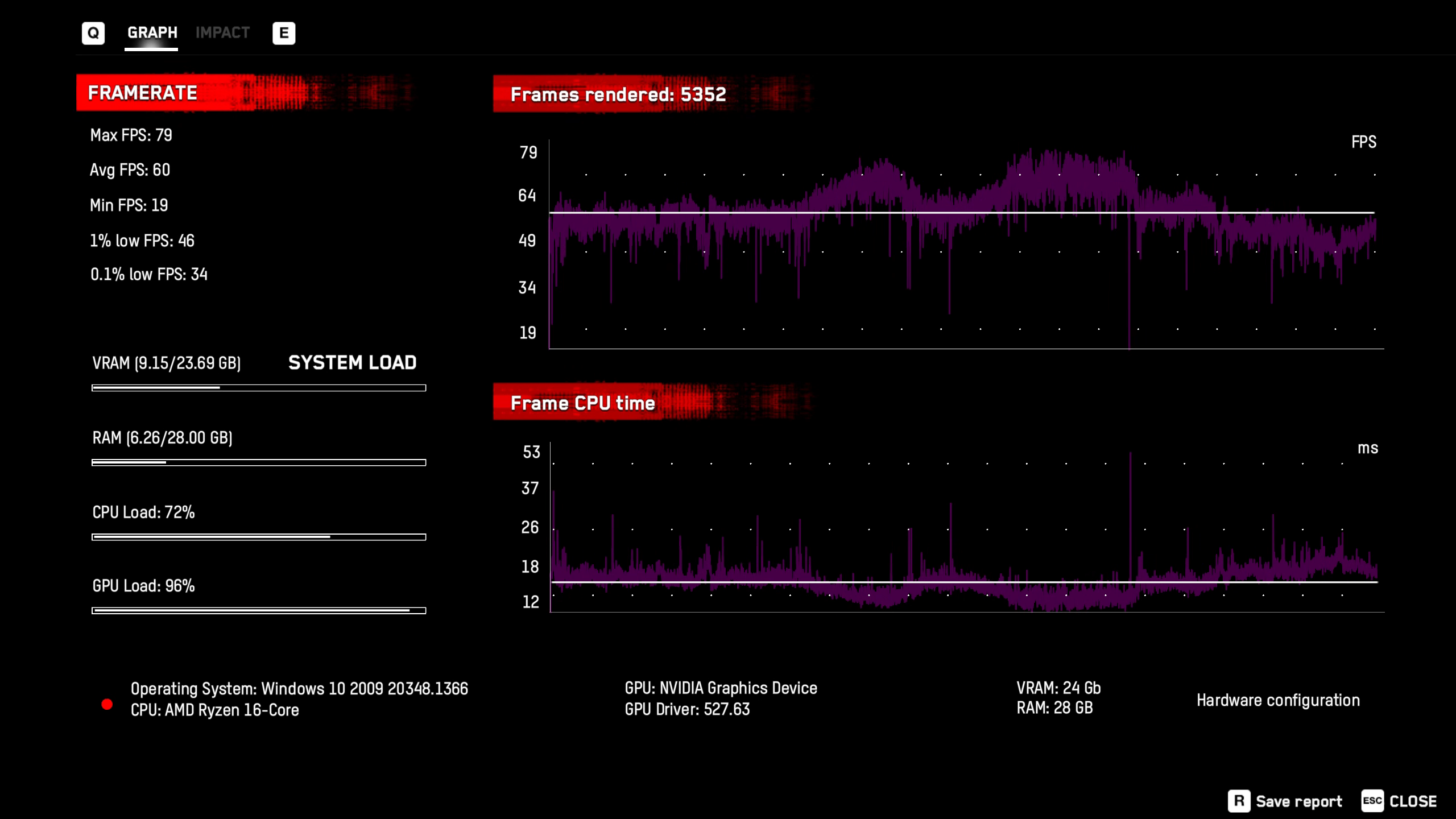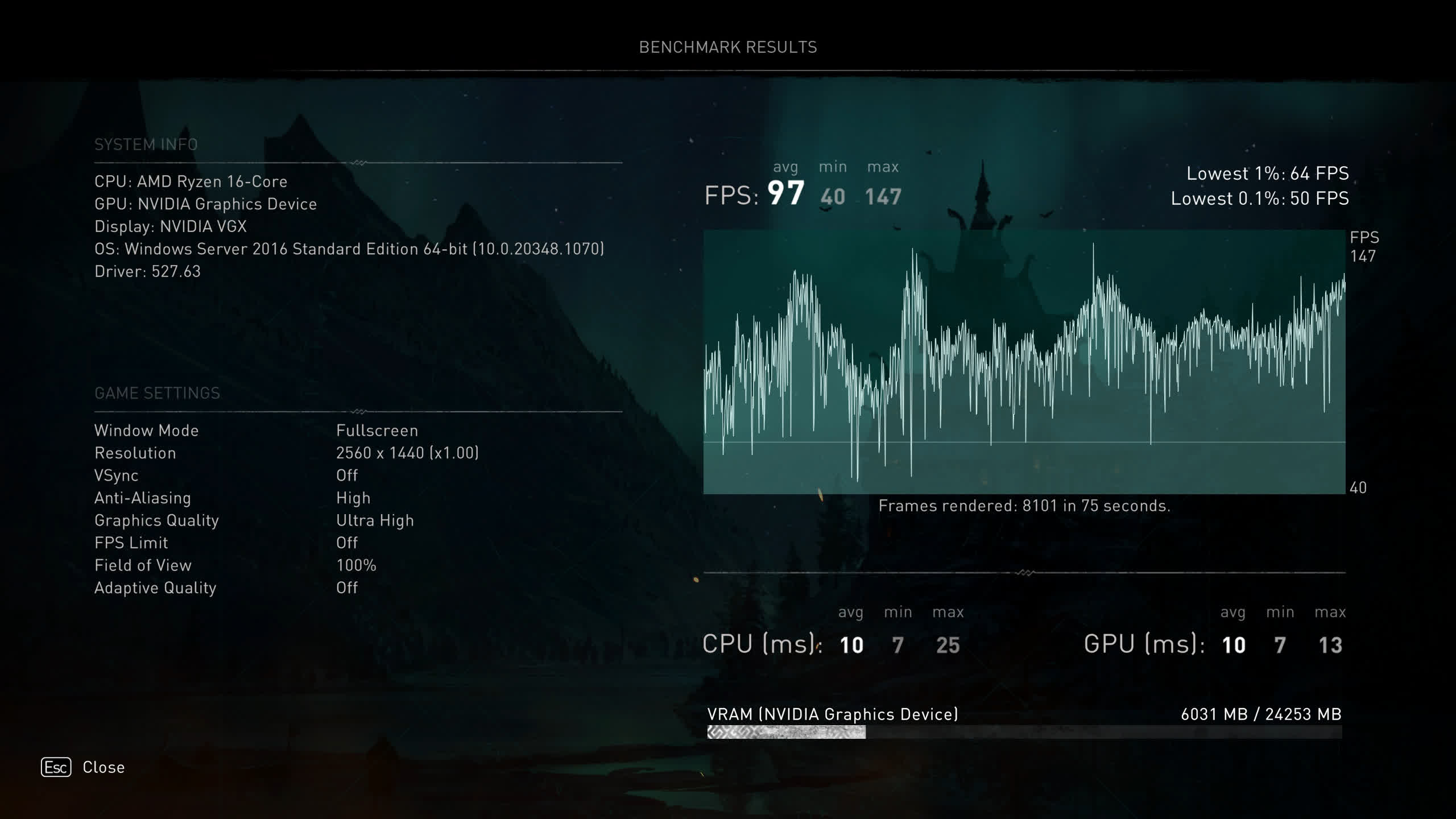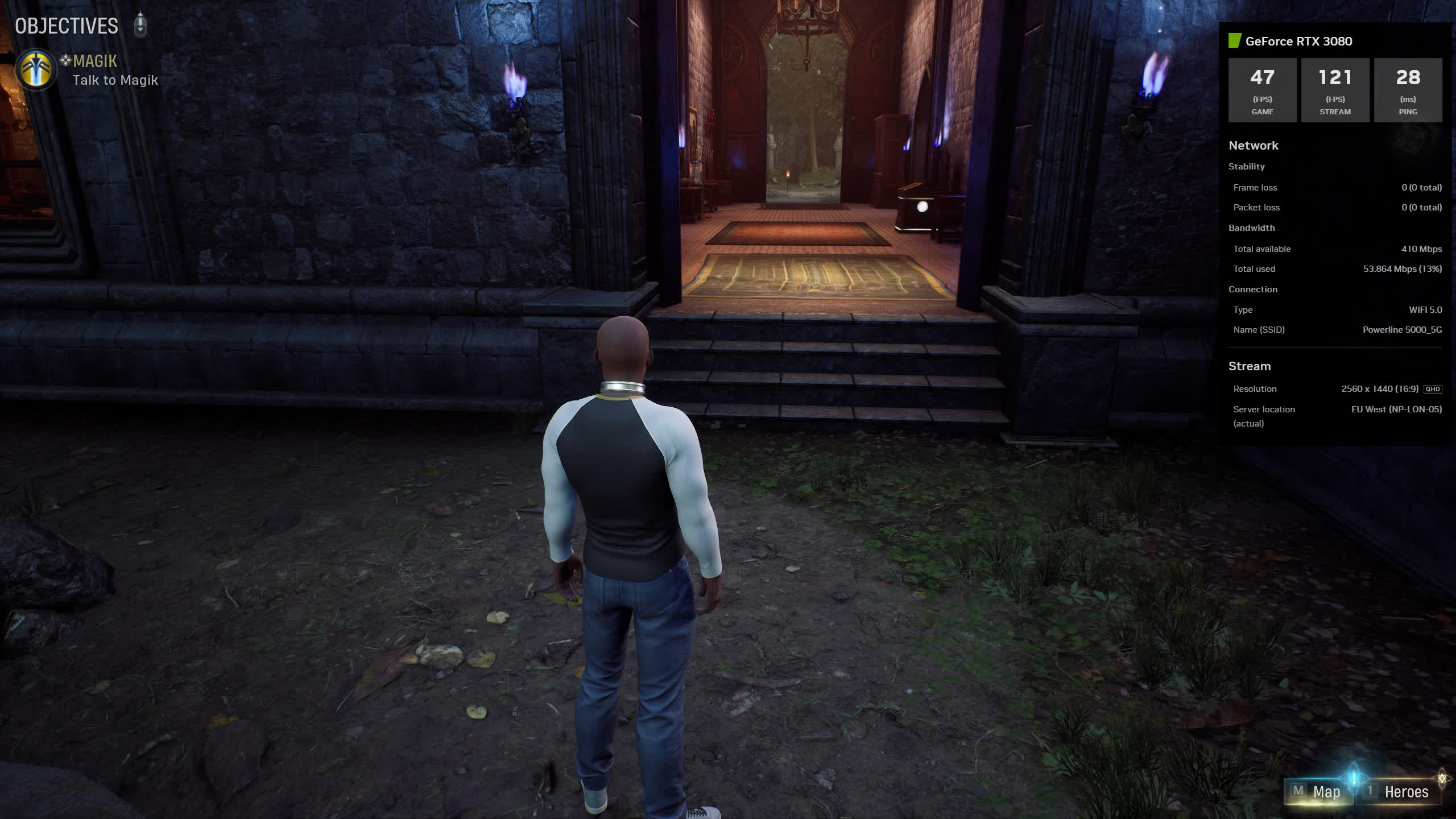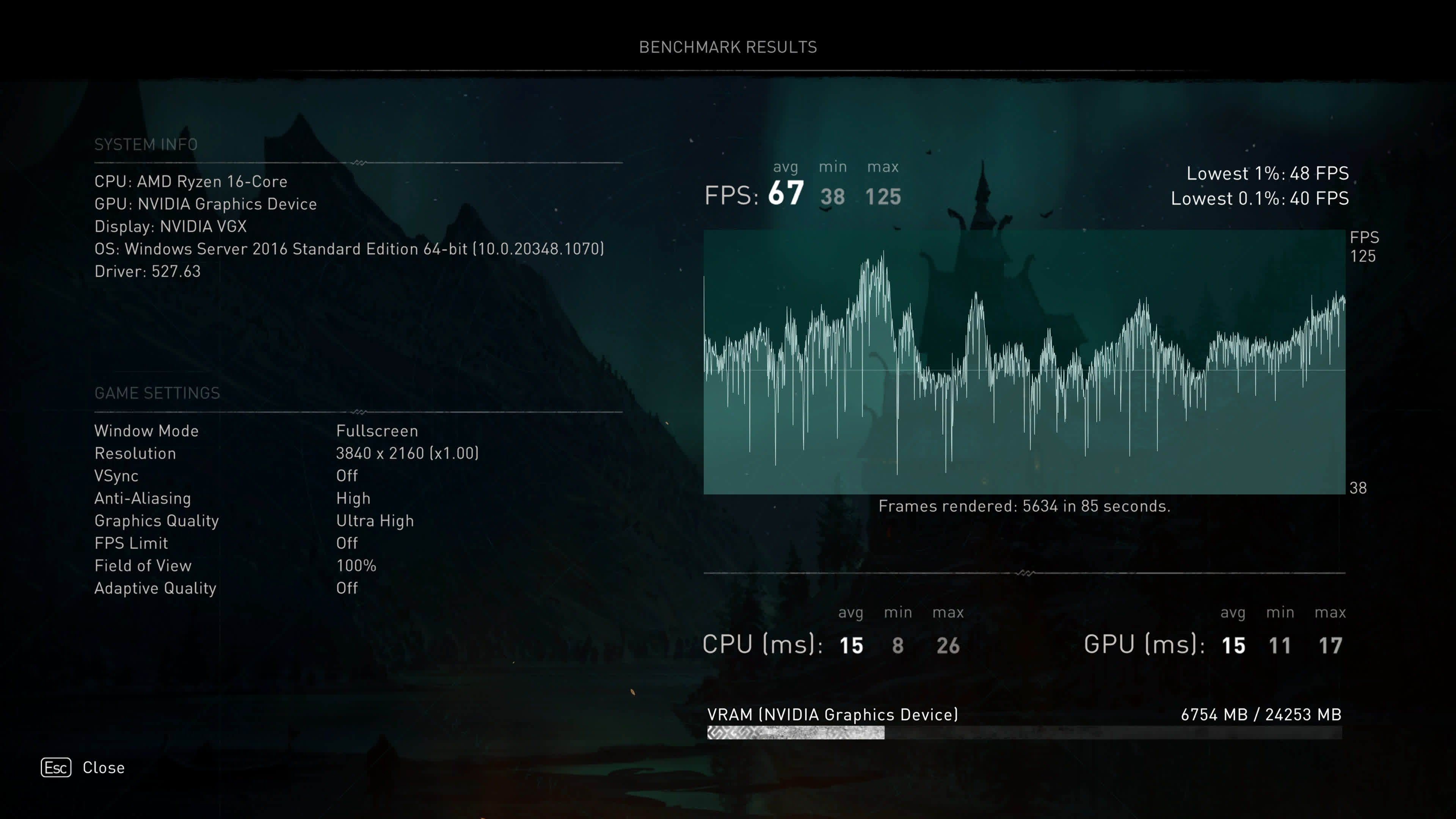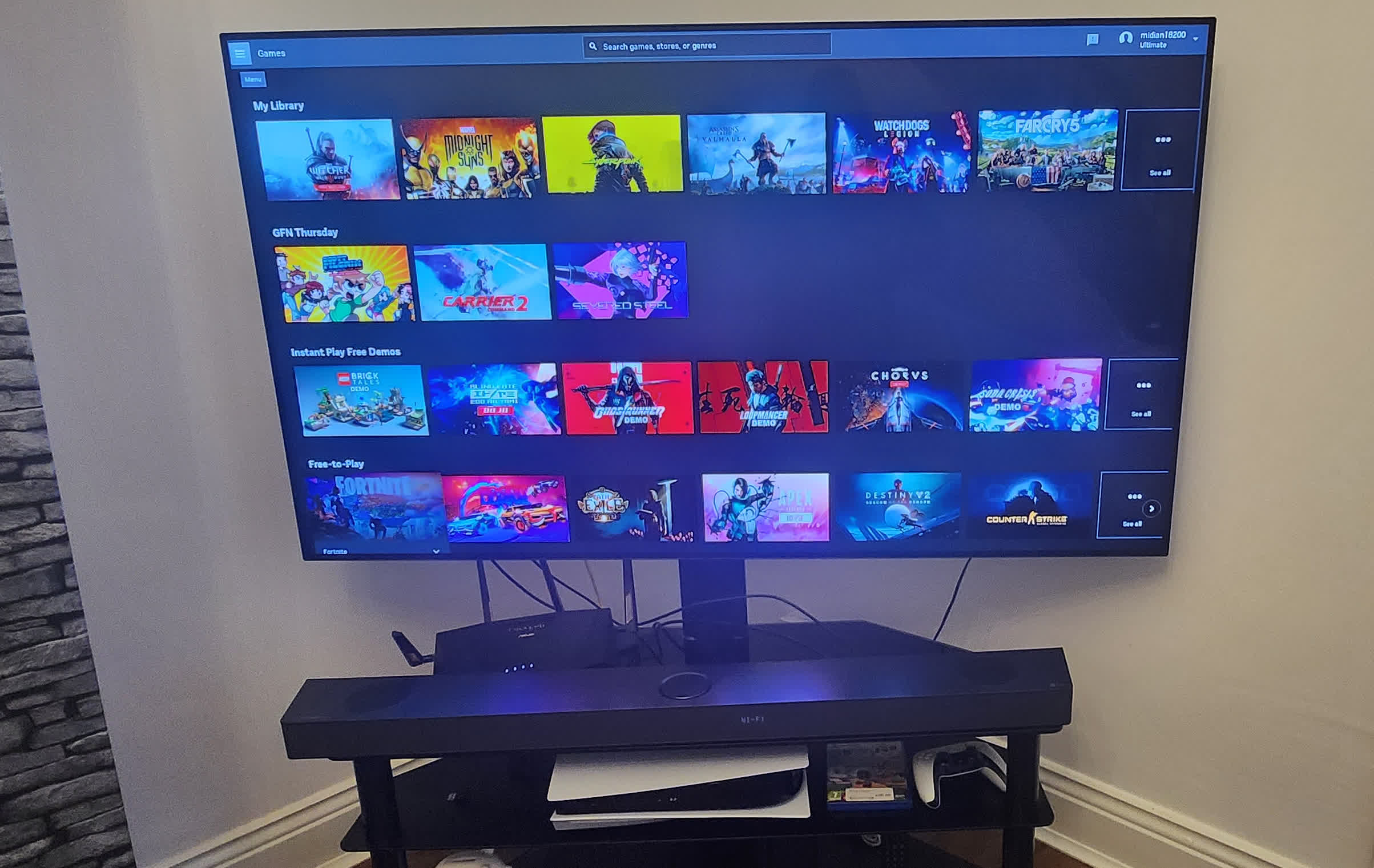Video games are getting prettier. But the price that comes with more realistic graphics, ray tracing, and other fancy systems is more demanding hardware requirements.
It used to be that even the latest AAA titles would recommend a GTX 1060 or 1650, the top two most popular cards on the Steam survey. Several recent games, however, have started to recommend newer, more powerful GPUs like the RTX 2070 (Dead Space) or even the RTX 3070 (Plague Tale Requiem).
Buying a new graphics card is more expensive than ever before, especially if you're aiming for a high-end GPU. But there may be another option, one that supposedly allows you to play games on an RTX 3080 (and eventually an RTX 4080) on a subscription model...
Game streaming: How is GeForce Now different?
Game streaming services are still relatively new, but in their short life you could say none have really exploded in popularity, and some have completely failed, like Google Stadia. However the concept itself is a compelling one in theory. Stream your games instantly to a device of your choice, no setup or download necessary.
GeForce Now is Nvidia's take on game streaming that lets users play the games they own from the cloud with all processing taking place on their hardware. There are three tiers: a free one that uses a "basic rig," a Priority level for $9.99 per month that offers hardware capable of 1080p resolution at 60 FPS, and the $19.99 per month Ultimate tier that offers RTX 3080-like hardware, up to 4K resolution, and up to 120 FPS.
Nvidia recently announced it would be upgrading the Ultimate tier to RTX 4080 GPUs for the same price.
Subscribers have limited session lengths, too: 1 hour on Free, 6 hours on Priority, and 8 hours on Ultimate. Nvidia says there are no limits on how many times a member may start a new session in a day, though there might be a wait to restart a session if you're on a lower tier.
The limitation may not sound like much, but it's a paradigm shift from playing your games locally the old fashioned and trusted way.
As a side note, the GPUs Nvidia uses in the cloud are not standard desktop cards, but an A10G GPU based on the same GA102 silicon as the RTX 3080. It has more CUDA cores (9,216) and a massive 24GB of GDDR6, much more than the consumer version's 10GB/12GB. However, the cloud GPU has 600GB/s of bandwidth, less than the desktop's 760GB/s. Additionally, GeForce Now's servers are based on a Ryzen Threadripper Pro 3955WX CPU with 16 cores and 28GB of system memory
Is an RTX 2070 Super outdated?
Having upgraded everything in my PC except for my GeForce RTX 2070 Super a year ago – you can read about that process here – I've started feeling like the Turing-era card has become a bottleneck in games and it certainly isn't making the most of my 1440p@165Hz Asus monitor.
An RTX 3080 or better would be a fine replacement. Sadly, I'm not willing to sell a kidney to buy one. So why not essentially rent the card from Nvidia? Moreover, my LG C1 TV has the GeForce Now smart TV app, meaning no more trailing a wire from my office into my living room to play games on a big set.
A good internet connection helps, a lot
As with all game streaming services, a fast and stable internet connection is not only recommended but needed. Streaming up to 3840 x 2160 or playing at 120 FPS asks for 45 Mbps speeds and either a hardwired Ethernet connection or a 5GHz wireless router.
I'm lucky enough to have a gigabit fiber line and an Asus RT-AX88U router that reliably hits 1 GB/s wirelessly from my PC. This, combined with a Core i7-12700K and 32GB of DDR4, means I'm expecting a fairly seamless experience.
The setup
Getting started involves signing up and downloading the GeForce Now app (you can use your GeForce Experience credentials). Then you will want to sign in to the stores where you have your PC games like Ubisoft, Epic Games, and Steam, whenever you have your games and syncing your libraries.
The GeForce Now app's settings page has plenty of options, including resolution upscaling and streaming quality. I picked 'Custom' settings, set the resolution to 1440p @ 120fps, and pushed the max bit rate up to 75 Mbps.
There's also a handy 'test network' option that informs me my setup meets all the requirements: more than 75 Mbps bandwidth, 0 packet loss, and under 40ms latency.
Gaming at 1440p
The first title I wanted to try is the newly updated Witcher 3: Wild Hunt. I own the game on GOG, which works on GeForce Now, most of the time. My initial attempt sees the loading screen hang indefinitely, as does my second try – this is not a promising start – but it finally works on the third go. I turn ray tracing to Ultra, DLSS to quality, and start the game. It's not... great.
By pressing Ctrl+G, GeForce Now brings up a real-time stats page that shows the stream FPS, in-game FPS, and ping. While my stream is 120 FPS, the game averages between 40 - 50 FPS. Switching off ray tracing and moving to Ultra settings pushes it up to around 70 FPS, but my heavily overclocked RTX 2070 Super manages around 85 FPS on these exact settings.
My card even hits 35 FPS on RT Ultra, not too far from the GeForce Now's GPU. I knew the experience wouldn't exactly replicate having an RTX 3080 in my rig, but were my expectations too high?
I also notice occasional hitching and stuttering during the GeForce Now gameplay. The stats show a ping of 32, which isn't great, along with some packet and frame loss. So, I decide to dig out my old 50-foot Cat 7 ethernet cable and try again. The ping drops to about 20, and the packet loss is gone, but the game's FPS doesn't improve, and I still notice some, albeit less, hitching.
Maybe another game will yield better results: Cyberpunk 2077 on GOG. It doesn't load the first time, which is fast becoming a feature of this service.
Our own testing shows the desktop RTX 3080 can hit 87 FPS @ 1440p at Ultra and 85 FPS with all RT on/DLSS Quality in the game, so I have high hopes. Again, the streaming effect means RT settings return around 60 FPS, and the Ultra setting is around 76 FPS. The very slight lag and hitching you don't get from using your own hardware remains, though it's much less noticeable than before.
Next is Watch Dogs: Legion on the Ubisoft Connect store.
The performance here is closer to desktop card performance, with RT Ultra reaching 60 FPS and the Ultra level with ray tracing off hitting 79 FPS. Again, though, this is with DLSS Quality enabled. Still, those results are certainly better than what the RTX 2070 Super manages.
Moving to another Ubisoft Connect store game, Assassin's Creed Valhalla, returns the best result so far. Our testing of the RTX 3080 12GB showed this title averaging 94 FPS at 1440p @ Ultra High quality. GeForce Now manages 97 FPS at the same settings. There are some big frame dips, though they're likely due to my switching back to a wireless connection.
Time for a Steam game.
I've recently been enjoying Marvel's Midnight Suns, which has a ray tracing option that can make the outdoor Abbey sections quite demanding. On the overclocked RTX 2070 Super, pushing the quality up to Epic, setting DLSS to Quality, and turning on ray tracing gives an average of around 63 FPS.
I'm expecting good things from GeForce Now with this one. Sadly, the exact same settings return around 55 FPS, with drops as low as 45 FPS.
It seems the keyword here is inconsistency. The majority of titles perform worse, either slightly or noticeably, than the RTX 3080 desktop card at 1440p, and at least one is worse than the RTX 2070 Super. On the flip side, some do offer similar performance, while a handful, like Assassin's Creed Valhalla, bring even higher frames-per-second while being streamed.
I was hoping to try out Forza Horizon 5, Plague Tale Requiem, and Warhammer 40,000:Darktide, some other demanding favorites. Unfortunately, these are all titles I access via PC Game Pass.
Microsoft has its own cloud gaming streaming service, so it's not going to offer integration with a rival-- another reason people might prefer to buy their own graphics card.
Gaming at 1080p @ 120 FPS and 4K @ 60 FPS
Two of the big GeForce Now Ultimate features Nvidia promotes are support for 120 FPS and 4K. Testing the former requires some compromises, such as switching to 1080p and turning ray tracing off.
AC: Valhalla keeps a pretty consistent 120 FPS framerate at this resolution with the graphics maxed. Both Cyberpunk 2077 and The Witcher 3 return around 100 FPS (DLSS Quality), and they look very nice and smooth, even with the rare stutter. Turning on all ray tracing effects in supported games tends to knock these frame rates down to around 70-80 FPS at this resolution.
According to the latest Steam survey, almost 65% of participants use 1080p monitors, so the 120 FPS feature of GeForce Now could be a compelling selling point among those with high refresh-rate Full HD monitors.
GeForce Now performs pretty well at 4K
GeForce Now really shines at 4K. All the games I tested looked gorgeous at this resolution, especially the Witcher 3. They ran smoothly at 60 FPS with DLSS set to quality and the graphics settings maxed. However, turning on any form of ray tracing will kill performance, cutting the frame rate in half or worse, which seems to be a recurring theme at every resolution.
Mobile and TV
Being able to play anywhere on a multitude of devices is one of game streaming's promising advantages over buying a GPU for your PC.
I was quite impressed by the Xbox cloud gaming service's Game Pass Ultimate mobile app – would GeForce Now be as good?
Playing on the 7.6-inch Galaxy Z Fold 4 and connecting an Xbox controller improves what is already an impressive mobile experience. Marvel's Midnight Suns is very good, while the Witcher 3 is surprisingly smooth and looks great (the video above doesn't do it justice). I can imagine people staying in hotels without a gaming laptop would get a lot of enjoyment out of this portability.
The GeForce Now app is also supported on newer LG and Samsung TVs, an appealing prospect for anyone with televisions located far from their PCs. Time to make the most of my LG C1's 4K screen and 120Hz refresh rate...
It looked good up until this point
More disappointment: the smart app is limited to 1080p and 60Hz, sigh. Nevertheless, it'll probably still look pretty good on the big screen.
I start with the Witcher 3. Once it loads, which takes an achingly long time, I'm disturbed to find Geralt frantically running around in a circle as if someone had spiked his decoction with LSD. The horrible stuttering and lag make the effect even worse, as if I were the one who dropped acid. GeForce Now informs me that the problem is due to a "spotty connection," which is strange as the TV is connected directly to the router below via ethernet. AC Valhalla is an equally awful experience.
Closing Thoughts
It should be obvious by now that GeForce Now doesn't perfectly replicate the experience of owning an RTX 3080. Barring a handful of exceptions, games will perform worse when streaming compared to having the Ampere card in your rig, but such is the nature of the beast.
There's also a very slight degradation to picture quality, the occasional lagginess, hitching even with the best internet connections, some bugginess, and the fact ray tracing seems to kill framerates even more than it does on your local desktop GPU.
No PC Game Pass titles is also a pain. That's not even mentioning obvious issues such as not being able to play if your internet goes down and no access to Nvidia graphics card features such as the new AI-assisted upscaling of videos.
However, tempering expectations doesn't mean GeForce Now is bad. It's still the best game streaming service available right now, and it's likely to be especially beneficial for specific use cases. If you're coming from an older/less-powerful GPU, want impressive performance without paying a fortune in one go, and like the freedom of accessing games on multiple devices in different locations, the service could be ideal. Moreover, playing at 1080p@120fps or 4K@60fps can be a great experience if you have a display that supports them.
Personally, the negative points combined with the small improvements over my RTX 2070 Super mean I'm unlikely to subscribe beyond this first month. Nvidia is in the process of upgrading its Ultimate tier to RTX 4080 cards, bringing upgraded performance that could make the subscription worth the money. At that point, I may reconsider my decision.
Pros
- A great way of enjoying 1080p@120Hz and 4K@60fps without buying an expensive GPU
- A small number of games perform better than the desktop RTX 3080
- Play on many devices, access the service anywhere you have a good internet connection
- The arrival of RTX 4080 cards could be a game changer, literally
- No need to download or update games you've already bought
Cons
- Most titles' performance is inferior to equivalent local hardware, sometimes significantly
- A (very) decent internet connection via ethernet helps a lot
- Hitching, stuttering, and lag is an occasional annoyance
- Can be buggy
- That $20 per month price quickly adds up
- Not all games are supported
Further Testing
Since we published this article about cloud gaming with GeForce Now, we have run additional tests you may be interested in:
